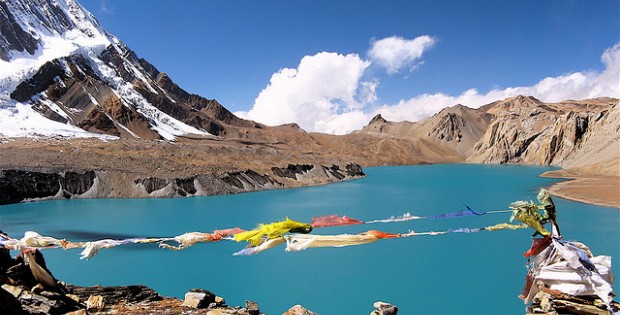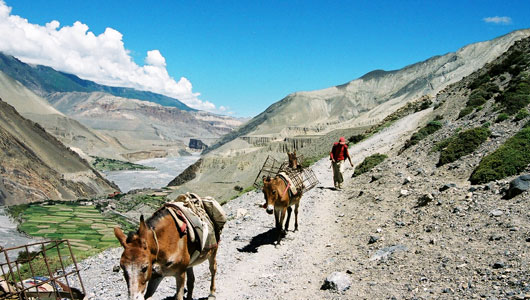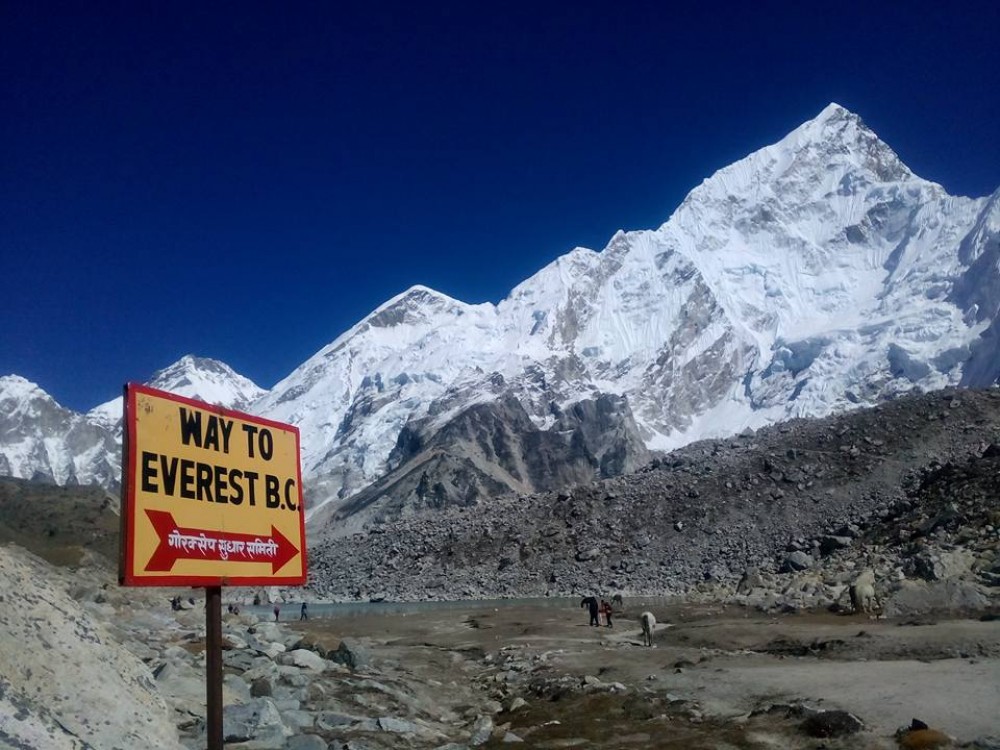Nepal Travel Guide

NEPAL is sometimes bypassed by travelers because they figure its an extension of India its not. Nepal has a beautiful, fascinating, long history. The Nepalese are incredibly friendly and fun learn a bit of Nepali and they will love you for it. Nepal is a mecca for outdoorsy type travelers because of the Himalayan mountains that offer up some of the best trekking opportunities in Asia. In fact, Nepal boasts eight of the 10 highest peaks in the world. The country is generally safe (check out the political situation with the Maoists, it can change rapidly) and Nepal attracts both outdoorsy types and volunteers in equal measure. The power situation makes working remotely from Nepal tricky (there can be as few as eight hours of power every day).
I loved visiting Nepal and I loved learning about culture and language. I highly recommend a visit, but that being said,post-earthquake Nepal is a very different place than it once was. The April 2015 earthquake had a devastating effect on the people of Nepal on the country transportation infrastructure, and on the tourism industry. Now, its still a place you can travel and have a wonderful time. In fact, I am a firm supporter of responsible tourism as a way to help Nepal rebuild. But the impact, death toll, and the level of destruction mean that travelers should be keenly aware that the country will take years to rebuild. Some posit that it will take decades to recover from this earthquake. All this to say, be sensitive to the fact that this country is facing a long road ahead. Tourism is one part of a solution, but only when tourists are committed to a responsible approach to helping the country come out stronger on the other side of this quake.
You can skip straight to the responsible volunteering & travel section, or to the city guides:

Nepals history dates back more than 2,500 years. But much of that ancient history is unknown. Many of the UNESCO sites worth visiting date back to the 1400 s. Its worth knowing a bit about Nepali politics, as its an unstable and ever-changing topic. A monarchy ruled Nepal until 2008, at which time a democratic republic and a constitution were established and adjusted over the next several years.
As Nepal developed, unlike many countries it remains about 80% rural. Its also one of the least developed countries in the world according to the U.N. This means travelers will see drastic differences between life in the cities and life in the small villages. As a result of this mix, lifting the rural areas out of extreme poverty has proven difficult. The political climate is often tense, and the lack of education in these rural areas has had a direct impact on the preservation of Nepals natural resources. As tourists come to Nepal, the country struggled to meet tourism demand. This has resulted in poorly maintained transportation infrastructures and the use of natural resources in unsustainable ways. Its a bit of a tough situation, as the tourists are both the core issue and yet also the only way to bring money into these areas.
Modern Nepal is a fascinating, diverse place. Neighboring countries have had a marked influence on modern Nepali life. Travelers will see influences from India, Tibet, China, and even Mongolia. The country has 30+ ethnic groups and with these a large variation in the number of religions and dialects. With all this diversity, the country has a mixed bag of religions as well. Predominantly Hindu, the country integrates Buddhism and animism too. All this to say, the mixing of cultures over the years have given Nepal a history as beautiful as the landscape.

The Fast Facts About Nepal Travel
Currency: Nepalese Rupee (NPR) (current exchange rate)
Electricity: 220V/60Hz (multiple plugs as they have retrofitted many to fit American and European plugs. Be careful of plugging in some electrical devices as the the U.S. runs at 120V).
Primary Airports: Kathmandus Tribhuwan International Airport (KTM)
Water: Not safe. Drink bottled, or consider the merits of a SteriPen or LifeStraw for your trip.
Internet Situation: Kathmandu and Pokhara have extensive access to internet shops filled with computers. There are also restaurants and coffees in both of these primary cities that offer free WiFi. The internet is decent in both of these very tourist-heavy cities. You can do most anything you need to on the internet, uploading information, photos, emails. Video calls likely only in the bigger cities. Outside of Pokhara and Kathmandu, its fair to non-existent. Beyond the internet, its the lack of consistent power that will foil your plans. You have to carefully plan your internet time if youre running a business, you will surely want to buy a SIM with data as a backup.
Visas: Nepal issues visas on arrival for citizens of most countries. These can be purchased for 15, 30, or 90 days and range from $25 to $100. Check your visa requirements here. You must bring a passport-sized photo, or stand in line and pay for one when you arrive. Volunteers technically require a visa arranged by the place they are working with as volunteering on a tourist visa is expressly forbidden, though harder for them to enforce.
Festivals of Note: Phalgun Festivals, Kathmandu (Feb/March). Dashain, country-wide (September/October). Indra Jatra, Kathmandu (September).
Trekking in Nepal :
As one of the top activities in Nepal, there are a handful of specific issues directly in and related to your trek. A key concern is the impact trekkers have on the remote mountain environments during their trek. Trekkers should plan on keeping their waste to an absolute minimum. This includes packaging from food or items youve packed, as well as plastic water bottles. All trash has to be burned (not ideal) or carried off of the mountain. Do your part and carry a reusable bottle and a SteriPen or Life Straw for your trip. Women should also use a menstrual cup not only for ease of travel, but its Eco-friendly, too.
Lighten your load on your trek. Carry the lightest pack possible and leave behind all the nonessential. Some trekkers will pay their porters to carry a heavier load and this is poor practice. The porters may accept the extra fee, but they are risking their livelihoods by trekking overloaded. General guidelines are 6-7 kilos per person, with a porter carrying max 12.5 kilos. Stick to this limit you wont need the extra clothes youre over-packing anyway. To that end, ensure you are paying fair wages to all porters and guides. One of the most compelling reasons to support tourism in the Himalayas is the positive impact it has bringing money into rural communities. Dont haggle too much and ensure you are tipping and spreading money around fairly.

